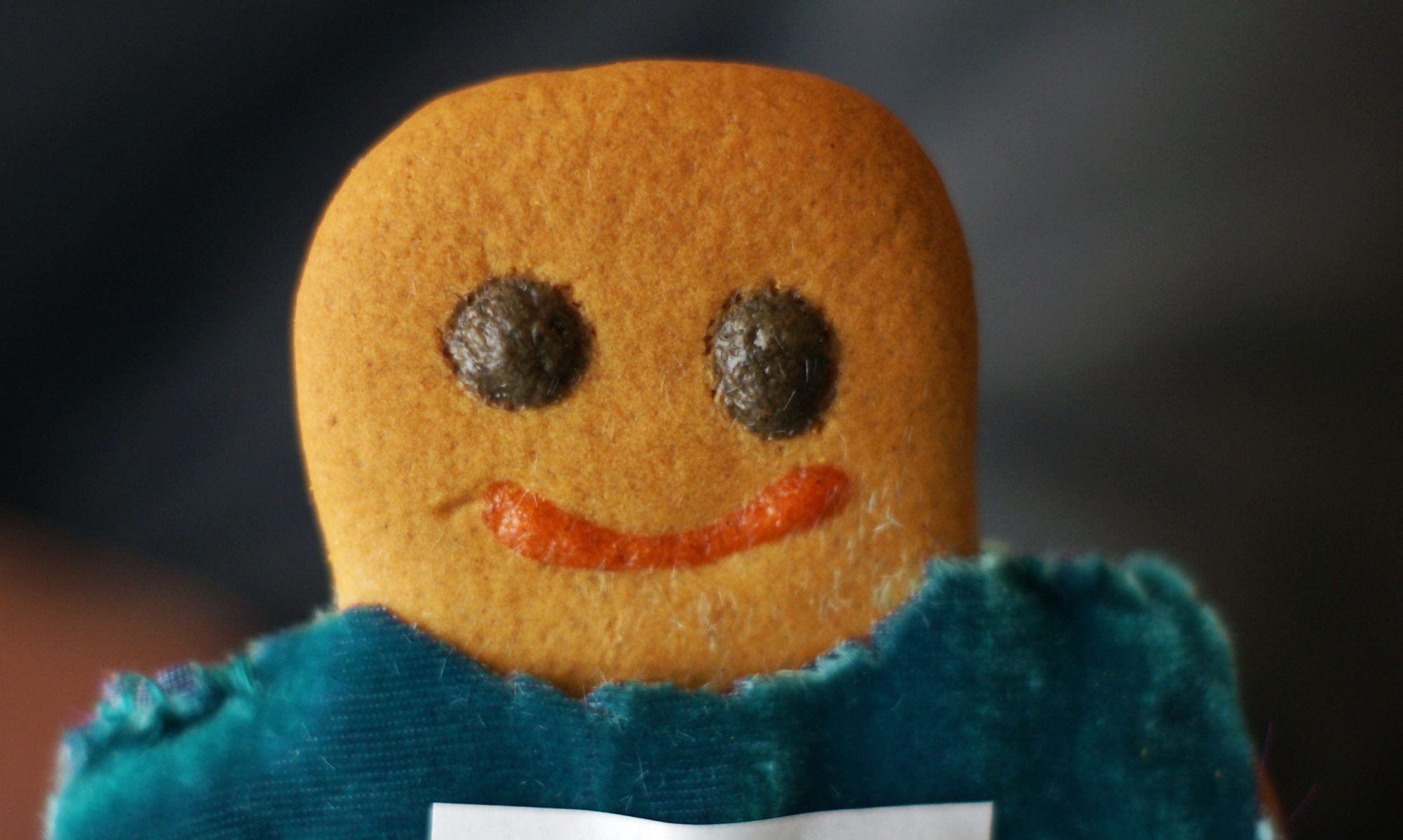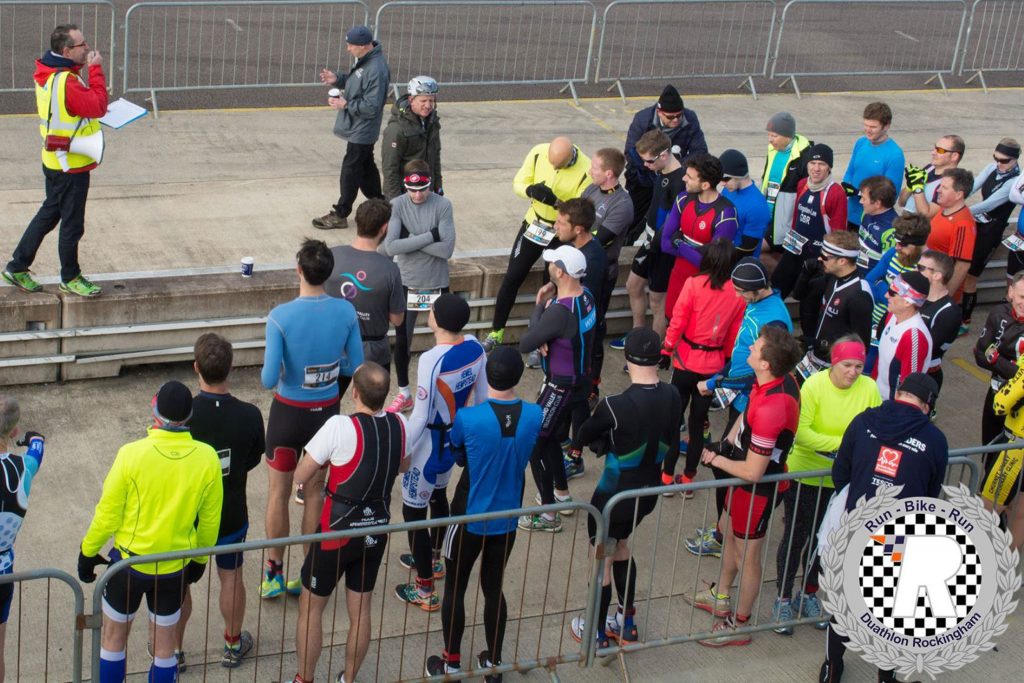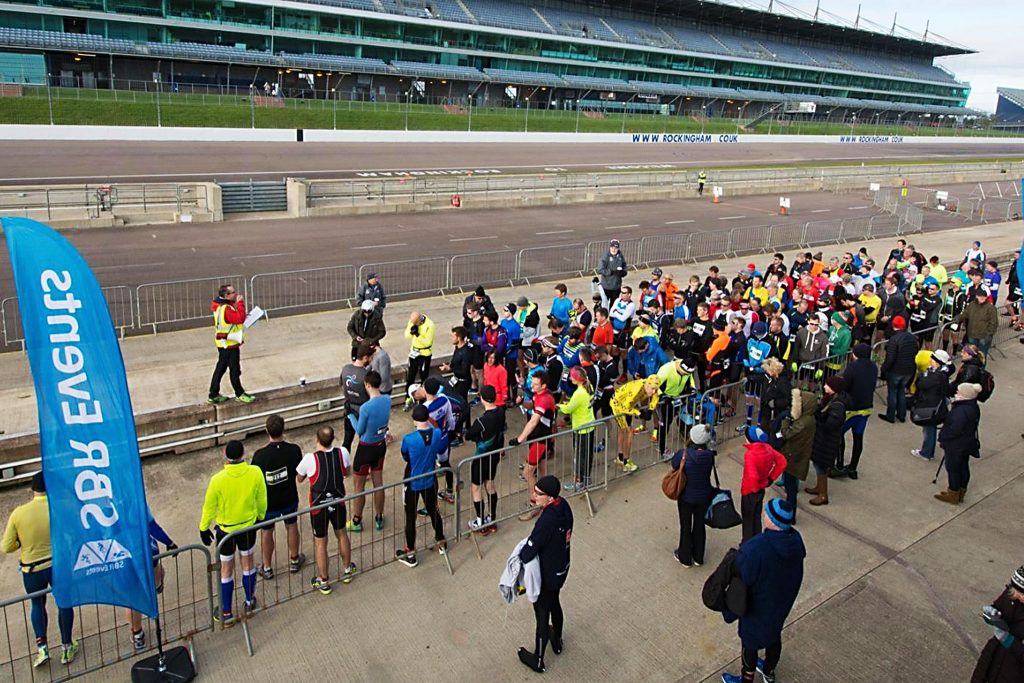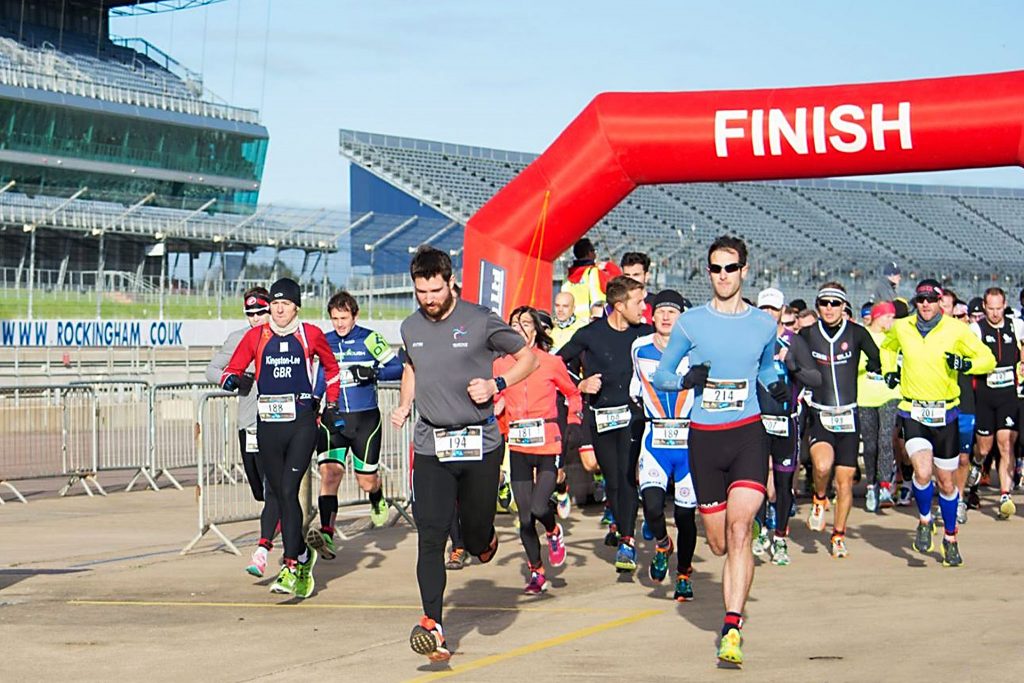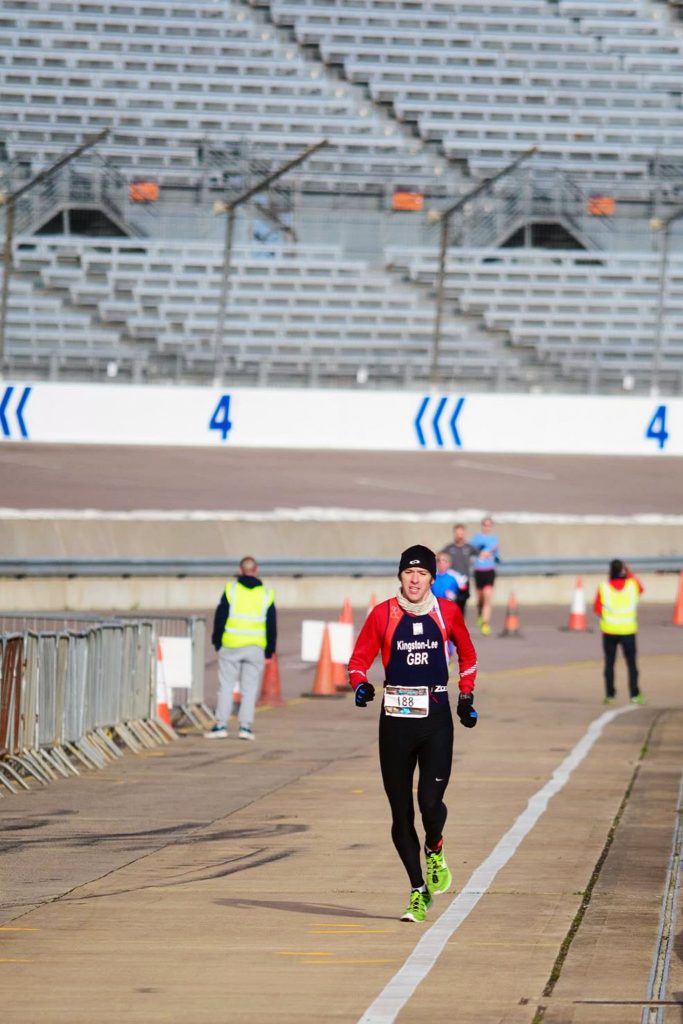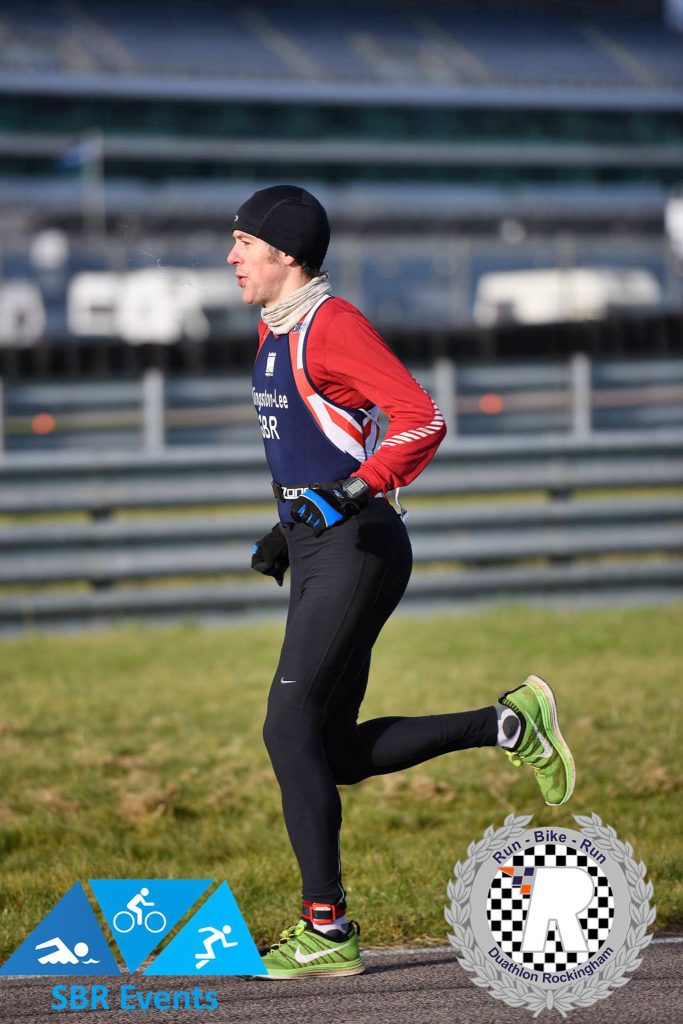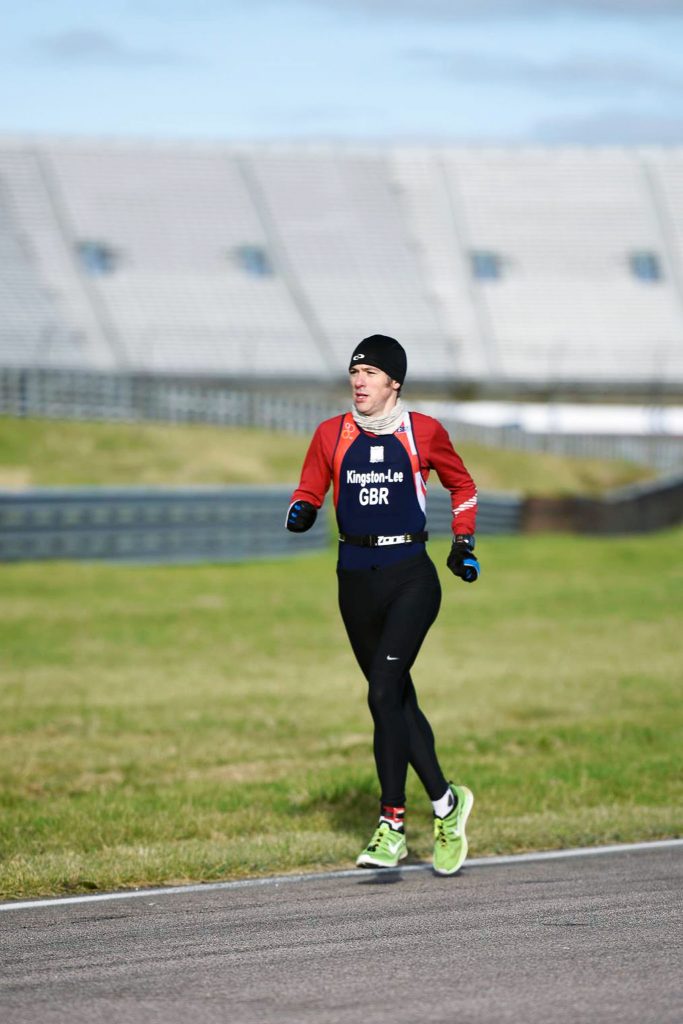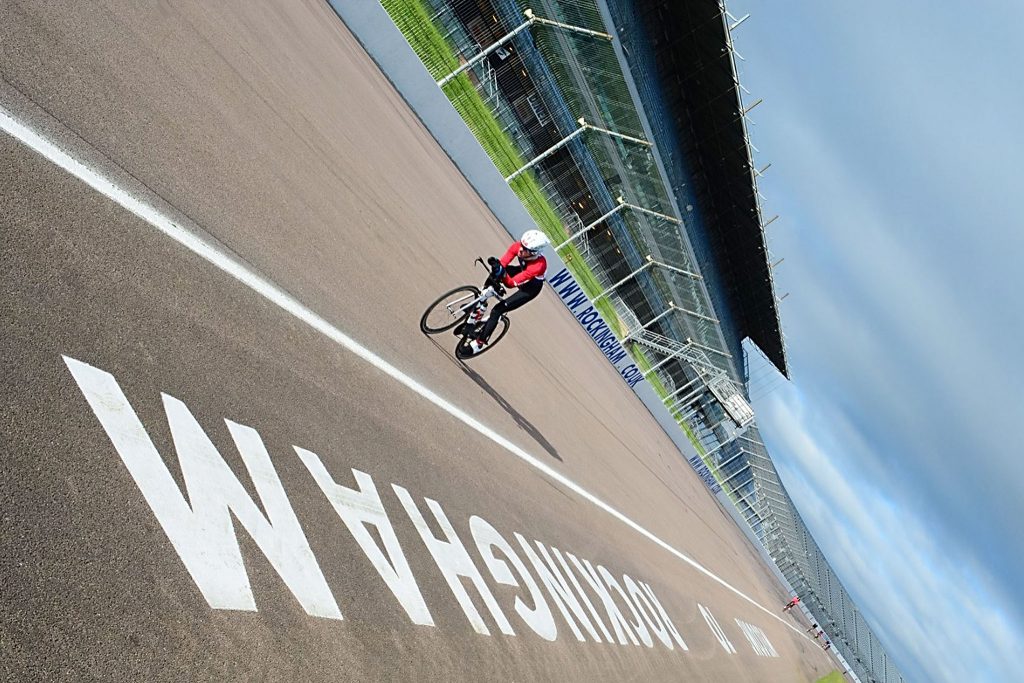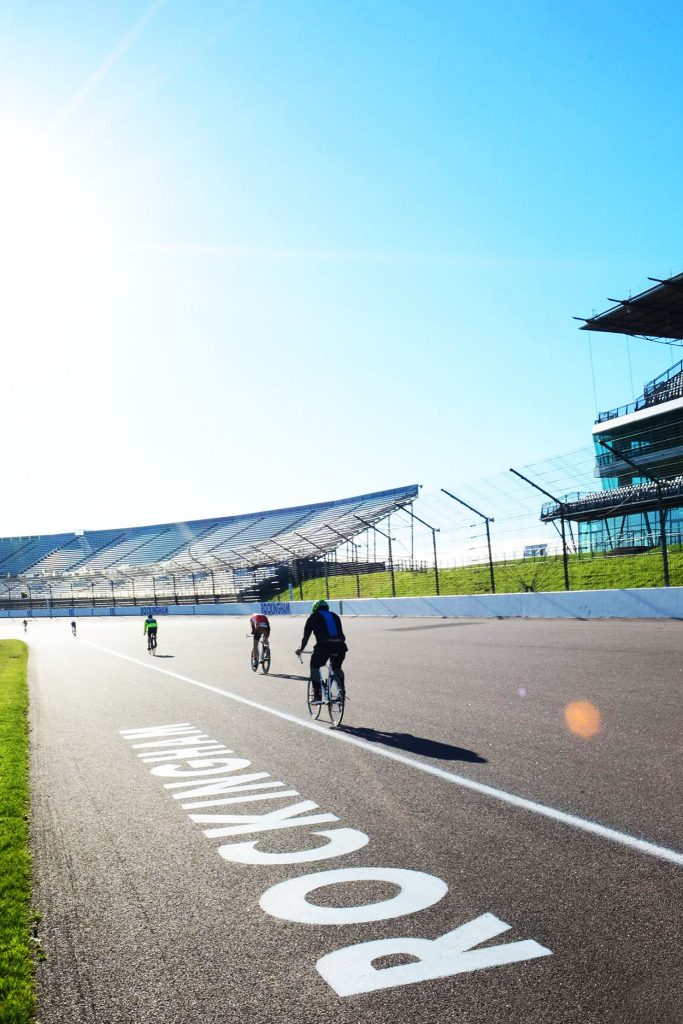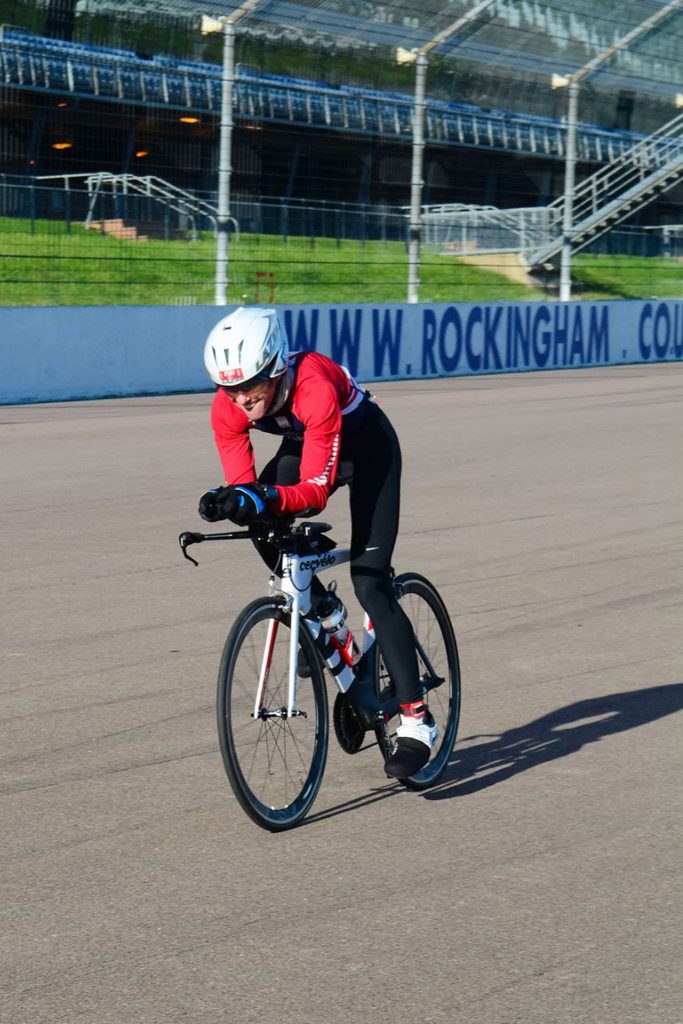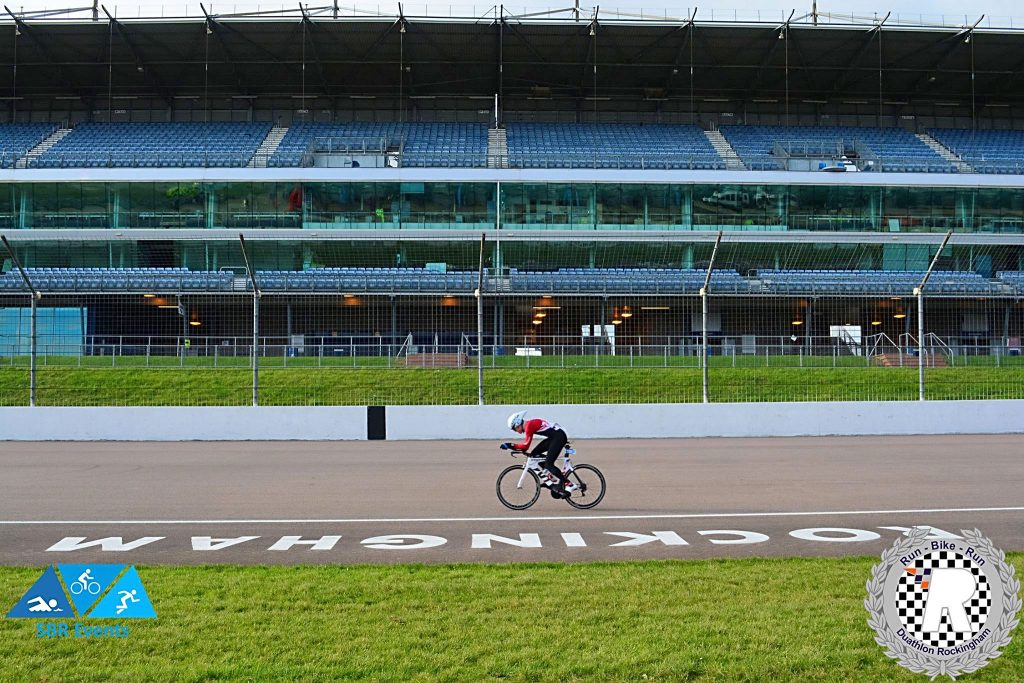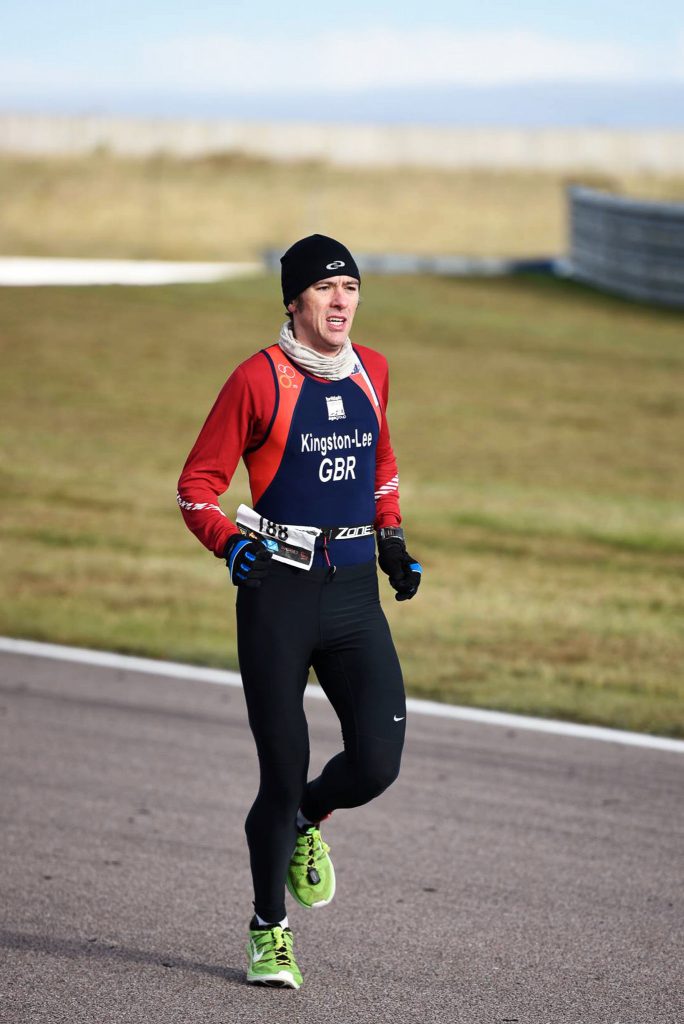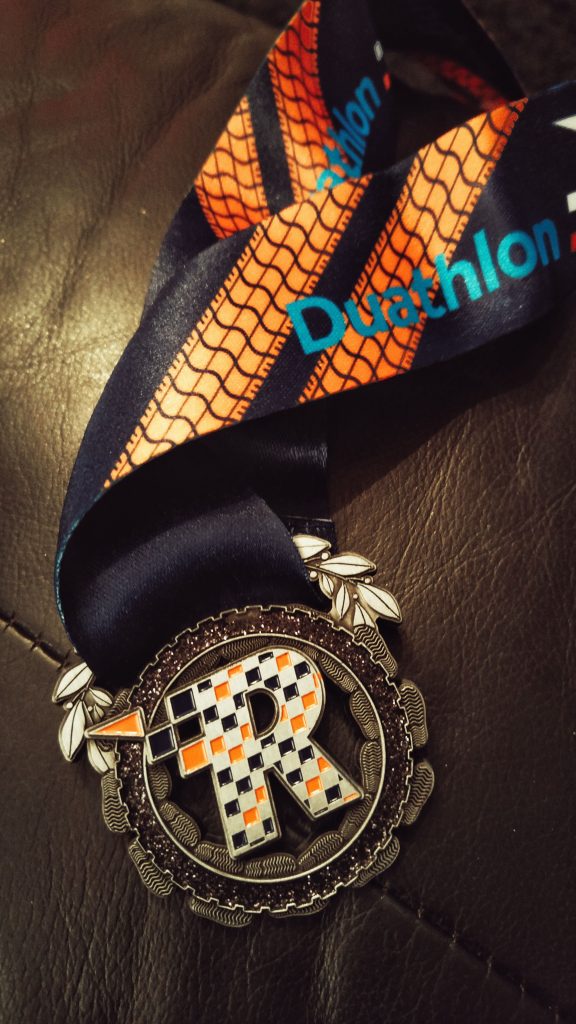I’m writing this three months since the race took place, so the detail may be a little lacking! Following Worksop where I felt like I ran really well despite some niggles, the week leading up to Rockingham was a case of trying to recover as best as possible while managing injuries that weren’t showing any signs of disappearing soon. The day after saw a recovery 5k on the treadmill before an easy effort at the spin session. Wanting to protect the hip especially which was aching I went on Trainer Road for three days, enjoying looking at a graph for the final few weeks before I got a new laptop and was able to immerge myself in the virtual cycling utopia that is Zwift.
I ran on Thursday evening with the club, enjoying a cider mile post run which has become a welcome staple of Thursday night runs in recent months. The left hip was feeling a lot like a bout of sciatica, but it was more bothersome than burdensome at this point. Saturday morning saw the second anniversary of Belton House parkrun and a round of the Grantham Running Club GP Series. I hoped to put in a fast time somewhere around 17 minutes to boost my chances of winning the series. Alas that sort of time wasn’t on the table, a lonely run at the front and some soft conditions underfoot meant that it was first place and just 17:56. Worse was that I’d managed to tweak my left calf muscle during the run and had to limp home. I was convinced it was related to the hip and the sciatica like issues. The only good fortune I enjoyed that morning was that I’d managed to drop my phone on the opening lap of the parkrun. I was aware not long after I’d dropped it and as I was leading at the time I was convinced it had trampled on and smashed into a thousand pieces. Very luckily a boy in a skeleton costume who was just behind me saw the phone bounce around, risked life and limb to pick it up and hand it to a marshal. A little muddy but otherwise fine, I was one relieved runner when I retrieved it after I finished!
That day I imagine I spent many hours working on my calf and hip. I remember the following morning when driving down to Rockingham I wasn’t convinced I’d be able to manage much more than a few hundred meters. My rather depressed mood wasn’t helped when I was guided into the wrong car park and wasted twenty minutes or so trying to get to the correct car park. Wore was to come. In a rushed warm up I jumped on my TT bike and rode up and down the paddock car park. I was told by a marshal to not use a particular bit of the car park and in turning to heed that advice managed to get my rear disc wheel stuck in a small drainage concrete gap. I still don’t know quite what happened (I haven’t yet been able to bring myself around to survey the damage) but all I know is I heard a loud bang and the escape of significant amounts of air. Being a tubular tyre it should have been game over. But, for the first time ever I’d bought a spare rear wheel – not thinking about a puncture, but because of the wind and fearing a disc may be too hard to handle.
To my credit I believe I remained rather calm while changing the wheel, which also meant adjusting the brakes; things that can take me the best part of hours and plenty of cursing. This time I effected all the repairs with plenty of cursing in just five minutes. I rushed the bike through to the transition zone, racked it, gave a cursory look around to work out where I was in relation to the pit lane markings and went out to attempt a running warm up. The warm up was just over a mile of jogging up and down the car park. The hip and calf felt bearable, to be honest I was running on so much adrenaline given the dramas with the bike and running late that I think I could have had a shattered hip and still feel nothing.
I lined up just in time to miss most of the pre-race briefing, but having been here a year before I knew the score: two laps of running the infield circuit to make 10K, 16 laps of cycling the oval to make around 40K, and 1 running lap of 5K to finish. I knew the hardest thing would be to count the right number of laps around the 1.25 mile oval bike leg – last year I memorably miscounted, rode a lap too many and lost the race win as a result. The prime objective of returning was to at least complete the race having done the correct number of laps. Anything else was a bonus!

Not quite as cold as 12 months earlier, but still fairly bracing, I was lined up in fairly full winter attire. Thankfully I was not in conspicuous but rubbish Team GB kit, the tri suit debuted at Sleaford a couple of weeks earlier was back having been a big success. Without much fanfare we were sent on our way and immediately I was finding myself somewhere near the front. To my relief there was little discomfort in the calf especially and I pushed to the front of a pack of five, clocking a 5:31 first mile.

As we turned and faced a fairly prominent headwind, sensing the opposition was of a similar running ability, I played tactics and tucked in at the back of the group making it quite clear that I was unwilling to take the pace. With others willing to push on the second mile was 5:35, but I was feeling really good, perhaps the best I’d felt racing in 2017! The third mile became a tactical affair as we ran on the oval apron into a wind and it slowed to a 5:48 as the lead runner began playing tactics of his own and the pack dwindled down to just three of us.


In spying upon gauging the opposition before the race, I’d noted that the standout athlete based on previous events was a member of Loughborough University. As the backside of the leader’s tri-suit had Loughborough Tri Club emblazoned upon it, I assumed that this was the guy I needed to be tracking. I was therefore caught a little napping when, as we ran down the pit lane to end the first lap, the Loughborough Uni athlete and his similarly youthful opponent peeled off into the transition zone. They, it transpired, were sprint distance athletes who were running just 5K for the opening run leg. I looked around a little nervously and realised I was running alone, with a sizeable gap to the runners behind me.

Wondering if I should ease up or push on I went for the latter, reckoning that maximising any gap during the run would help mitigate the inevitable losses during the bike leg. Mile 4 was a 5:27 and felt easy (The nice tailwind undoubtedly helped). A 5:38 fifth mile and a 5:46 sixth mile meant that I ran a 35:12 opening 10K leg. This was over a minute quicker than last year and gave me around half a minute over the second placed runner as I went into transition and found my bike.

The helmet on went okay, as did unracking the bike and taking it to the transition exit. That’s when the race began to unravel. I’d opted to attach the bike shoes to the pedals with the tried and tested elastic band trick. As I mounted the bike and slowly got up to speed I was able to get the left foot in the shoe and snap the elastic band. The right foot though would not go into the shoe. Firstly I went slowly trying to get the foot in the shoe. Then realising that I was losing loads of time I decided to get up to speed and then try and perform the operation at 25mph. This quickly proved to be impossible and impossibly dangerous as I was coming up behind slower riders taking part in the sprint race and being passed by quick riders also in the sprint race.
By the time I reached the exit of turn three and began the gentle uphill drag to the pits, I knew the only thing to do would be to stop and get the shoe on. I pulled over to the outside of the track, propped the bike against the wall, removed the shoe from the pedal (Not a totally straightforward procedure under pressure) and fixed the issue with the shoe – which was caused by the velcro fastening getting wedged inside the shoe when I’d tried to force my foot in.
Shoe on foot and back on bike and riding I lost probably only around 20 seconds but all momentum and first position had been lost. I spent the next hour or so riding not particularly well. The conditions were not as windy as last year, but the wind was just strong enough on the uphill run back to the pits to be quite demoralising. I found myself simply unable to push myself as hard as I’d done the year before. It may have been because I’d gone off too hard in the run, I think it was also a case of just not being willing on the day to put in a do or die effort, and being disappointed in not having my disc wheel available to me, which in the conditions would have been a big benefit.

I was pretty sure I’d lost the lead, but had no idea of who or where the leader was, nor who was also possibly behind or ahead of me, given the unique multiple lap configuration of the Rockingham Oval race. I made sure I counted the right number of laps by not trying to count the number of laps and instead going by distance, knowing that when the Garmin clocked 23 miles it was time to come into the pits. This did work; I know that for others, once again, they under counted or over counted the number of laps they rode. I think if I am going to do this event again, they need a system in place to help people know when they’ve ridden enough.

After a fairly disappointing hour and eight minutes, which was a net three minutes slower than twelve months earlier, I was at last off the bike and heading to the run leg. I avoided cramping up for perhaps the first time ever in a Duathlon and was on my way. There was no-one behind me and for a while no-one ahead of me either. I went off steadily and controlled, resigned to finishing in whatever position I was currently in. The first mile was 5:43 – I could have gone quicker. It was then I spotted a runner ahead of me who looked quick enough to not be a straggler in the sprint race and so, I deduced, was ahead of me in the standard distance. With nothing else to maintain interest in the race, I kept an eye on him, keeping the pace honest, if not entirely flat out. He was at least a minute ahead when I first spotted him, but slowly and inexorably I began to reel him in. The second mile all but matched the first at 5:44, the final mile back to the pits was harder than in the 10K leg as the wind had by now picked up. And by now I was definitely catching the runner up in front quite quickly.
Entering the pits to finish the race I’d clocked a 5:53 and now put the hammer down approaching 5 minute mile pace as I sprinted towards the finish. In the end it was too little too late as I came home around 15 seconds behind the runner in front, but I was pleased at least with how I closed the race and that the 18:27 5K to end the race was a minute or so quicker than in 2016.

I congratulated the runner in front on beating me, wherever he had finished and headed to the machine that punched out the final results. It was the receipt printed that told me I was third! I immediately cursed my misfortune on by bike mechanical for had I not had those I would have almost certainly have finished second. Somehow (and I cannot remember how) I was able to see the official results, and the winner was nearly ten minutes clear. Immediately my suspicion was that the winner had ridden a lap or two too few on the bike leg. But when I caught up with him later that morning and realised it was the Loughborough Athlete I’d reckoned would be the biggest competition I was not too concerned. When I dug into his Strava profile later that day it turned out he was simply bloody quick on the bike, clocking 58 minutes for the leg. This made me feel more at easy over the shoe incident and the wheel puncture – he was and is simply a better Duathlete than me, and unless I found eight minutes on a 23 mile bike leg, I was never going to beat him.
I got to chat to a few BTC and GRC folk who had either completed (Or who had disqualified themselves from) the Duathlon or who were taking part in the 5K, 10K and 10 mile races later that day. I was then presented with my trophy for finishing third in the Duathlon and the day was done. I had originally planned to hang around and watch the race but right then I’d had enough of Rockingham and so left for home.

And that was it for racing in 2017. A few days later the hip issue turned into full on can’t run pain, which lasted right until the start of 2018. I managed a couple of parkruns in December but couldn’t run for days thereafter. Thankfully some physio early in 2018 appears, touch wood, to have solved the issues, and hopefully I can enjoy as good a 2018 as I did 2017.
